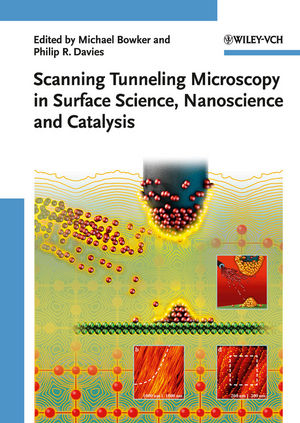Scanning Tunneling Microscopy in Surface Science, Nanoscience, and CatalysisISBN: 978-3-527-31982-4
Hardcover
258 pages
February 2010
 |
||||||
Michael Bowker has worked in surface science and catalysis for the last 25 years and has approximately 250 publications. He has worked in both industry (ICI) and academia. He leads the Heterogeneous Catalysis and Surface Science group in Cardiff, consisting of nine academic members of staff and 70 researchers. He founded the Wolfson Nanoscience Laboratory at Cardiff in 2006 and is Deputy Director of the recently established Cardiff Catalysis Institute. His research has focused on adsorption and surface reactivity, ranging from theo-retical studies of the effect of sintering, to selective oxidation catalysis, to studies of adsorption on well-defined surfaces. He has used STM for 20 years to study various aspects of surface structure and reactivity, pioneering the use of high temperature STM in this field. The group continues to focus on aspects of surface science and catalysis, now extending to nanoengineering and bio-surface interactions.
Philip R. Davies studied chemistry and mathematics in Southampton University. Undergraduate projects on surface electrochemistry with Prof. Laurence Peter and the modelling of adsorption at fractal surfaces with Professor Dominic Tildesley stopped him from becoming an accountant and led to his interest in surface processes. After graduating with double honours in 1986, he moved to Cardiff to study reactions at surfaces with surface-sensitive spectroscopy under the supervision of Prof. Wyn Roberts. After being awarded a PhD, he was appointed to a lectureship in the Department of Chemistry at Cardiff and continued to study surface reaction mechanisms and particularly the role of short lived intermediates. Since 1997, his interests have centred largely on the influence of local atomic structure on reaction mechanisms studied with scanning probe microscopies.
Philip R. Davies studied chemistry and mathematics in Southampton University. Undergraduate projects on surface electrochemistry with Prof. Laurence Peter and the modelling of adsorption at fractal surfaces with Professor Dominic Tildesley stopped him from becoming an accountant and led to his interest in surface processes. After graduating with double honours in 1986, he moved to Cardiff to study reactions at surfaces with surface-sensitive spectroscopy under the supervision of Prof. Wyn Roberts. After being awarded a PhD, he was appointed to a lectureship in the Department of Chemistry at Cardiff and continued to study surface reaction mechanisms and particularly the role of short lived intermediates. Since 1997, his interests have centred largely on the influence of local atomic structure on reaction mechanisms studied with scanning probe microscopies.



